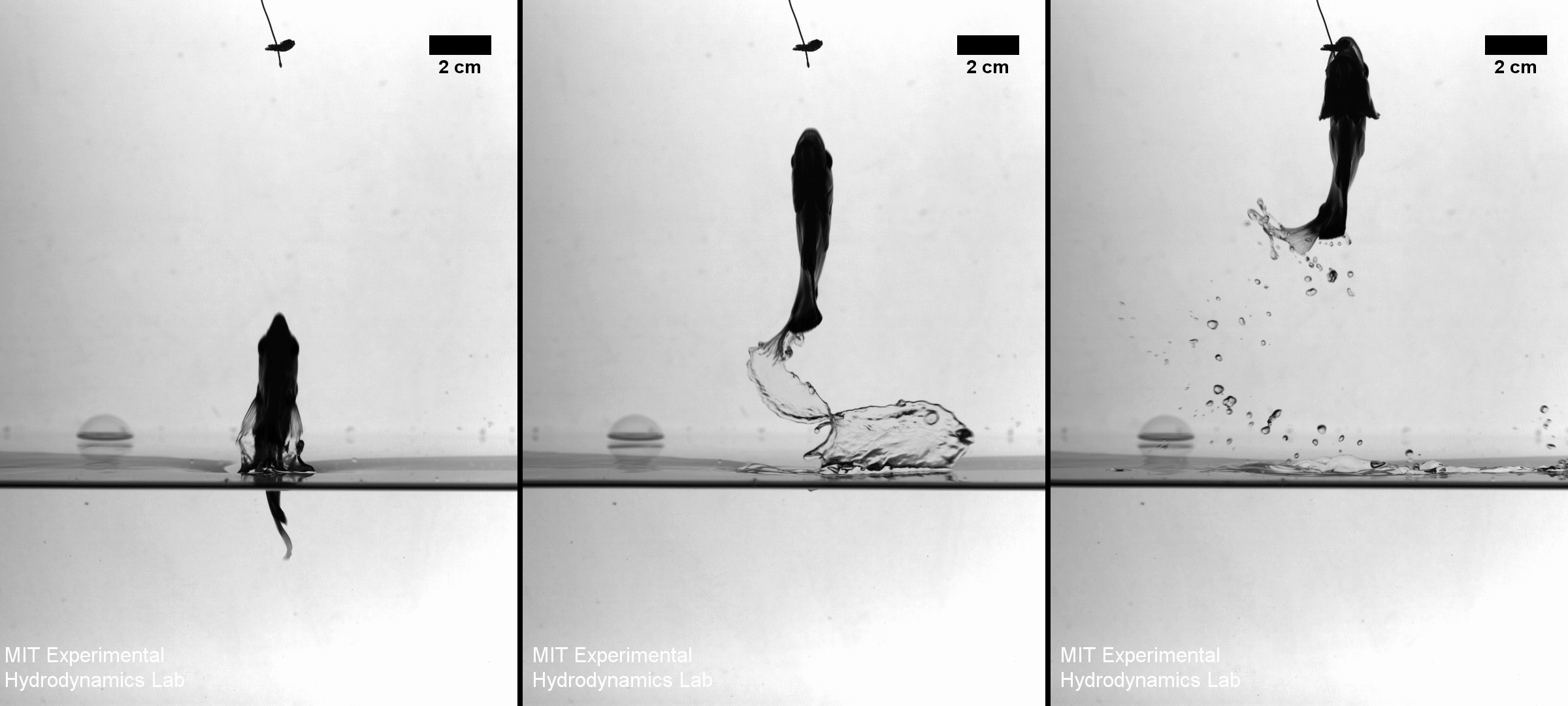Taking the Leap: Archerfish Snag More Prey with Amazing Jumps

Archerfish launch well-aimed water jets to stun their insect prey — but that's not the only trick in their hunting arsenal.
When spitting won't do the job, the fish hover below their prey and then suddenly leap from the water. Recently, scientists captured high-speed video of the leaping fish, documenting the fin and tail techniques that propel the fish upward.
Analysis of the archerfish's body movements offered insights into how they could jump so high — more than twice their own body length — to reach their prey. Understanding the biomechanics of the fish's jumping could inform the design of robots that could also "leap" from underwater and take to the air, the scientists wrote in a new study. [10 Secret Weapons of Small Creatures]
Spitting at prey is the best-known predatory techniqueof the archerfish, but it doesn't always serve them well when they have a lot of competition from other fish, study co-author Alexandra Techet, an associate professor of mechanical and ocean engineering at Massachusetts Institute of Technology, told Live Science.
However, a fish that jumps is frequently successful at nabbing its meal, capturing the prey 70 percent of the time, according to the new study.
"It's pretty impressive how well adapted they are — adjusting their feeding and prey-capture strategies to their competitive environment," Techet said.
Look before you leap
For the study, Techet and her colleagues recorded high-speed video of individual fish as they leaped for bait suspended above their aquarium, with the tasty morsels dangling at heights up to three times the fish's body length. They "trained" the fish to only jump — not spit — by removing the bait whenever the fish spit at it, until the fish were consistently jumping whenever they saw the hanging food.
Sign up for the Live Science daily newsletter now
Get the world’s most fascinating discoveries delivered straight to your inbox.
"They're at a dead stop at the surface, looking up. They sight the bait, start kicking their tail back and forth, and then they jump pretty much straight out of the water and grab the bait," she told Live Science.

Sharks, dolphins and whales can jump from the water, but they typically generate speed and power by swimming up from the depths, building momentum for a big jump. By comparison, archerfish jump from a near-stationary position just below the water's surface.
"So, they're really unique fish in that respect," Techet said.
Coordinated movements
High-speed video revealed how the body motions of the archerfish changed with the midair trajectory — how many tail flaps per jump, how the shape of the body changed, and how the acceleration or velocity of the tail varied from flap to flap, the study authors wrote.
They also observed the fish as they jumped from a tank seeded with tiny particles illuminated by laser light, visible only in near-infrared. Videos of the lit-up, moving particles enabled the study authors to calculate the velocity of the archerfish's movements and determine the energy cost of leaping. Turns out, the leaps are about as energy-efficient as spitting at prey and then hustling to retrieve that prey from where it lands.
The researchers are continuing to 3D image the fish's movements captured in the particle-laced fluid, to visualize the activity and coordination of all their fins — along with the tail — that propel them from the water, Techet told Live Science.
"I always like to look at the fluid mechanics, so that's where we're heading now," she said.
The findings were published online today (April 19) in the Journal of Experimental Biology.
Original article on Live Science.

Mindy Weisberger is an editor at Scholastic and a former Live Science channel editor and senior writer. She has reported on general science, covering climate change, paleontology, biology and space. Mindy studied film at Columbia University; prior to Live Science she produced, wrote and directed media for the American Museum of Natural History in New York City. Her videos about dinosaurs, astrophysics, biodiversity and evolution appear in museums and science centers worldwide, earning awards such as the CINE Golden Eagle and the Communicator Award of Excellence. Her writing has also appeared in Scientific American, The Washington Post and How It Works Magazine. Her book "Rise of the Zombie Bugs: The Surprising Science of Parasitic Mind Control" will be published in spring 2025 by Johns Hopkins University Press.









